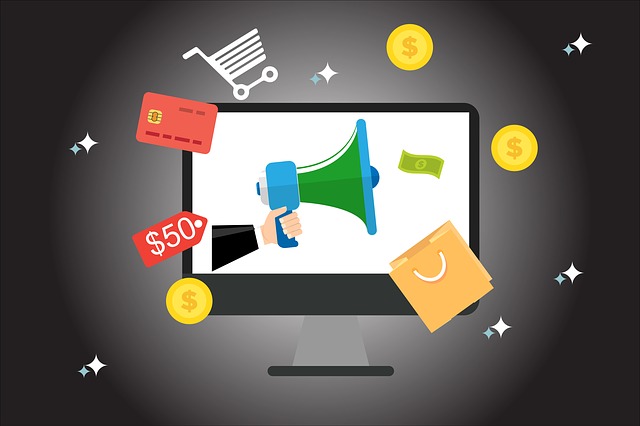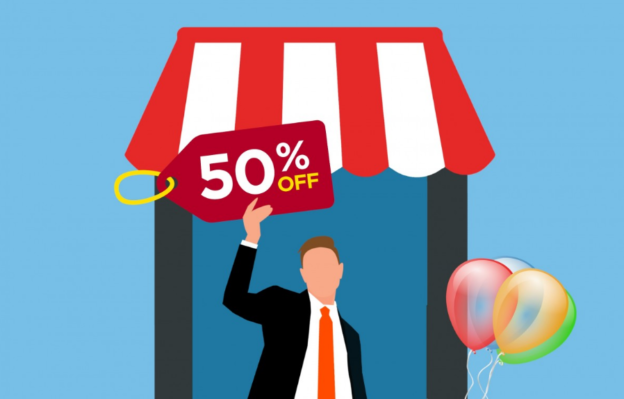How would you like to start a business selling online where you don’t have to buy or stock any merchandise? If this sounds like you then the drop-ship business maybe for you. This type of business can be run will little to no upfront money. Starting a drop shipping business is very easy, and you can run it from anywhere in the world, especially out of your own home.
Overview:
The great thing about setting up a drop shipping business is you don’t need any special skills to start this type of business. All you really need is a person who is willing to dedicate their time to ensure that the business succeeds. It will also help to have a computer with Internet access.
A Drop Shipping Business brings together people who want to buy a particular product and companies that are selling it. YOU – As THE SELLER – sell the merchants products through your own online store, or. online marketplace or your social media channel. If you plan to sell in an online marketplace, make sure you are aware of their rules on drop shippers, many online marketplaces may not approve of the drop shipping method of selling products you don’t physically have.
How it Works:
Once someone purchases a drop-ship product from you, your job is to submit the order to the drop shipper.
The DROP SHIPPER ships the product white-labeled as if the products(s) came from your business. Be sure that white labeling of products is in your contract agreement to retain your customers.
Your Profit is the difference between the price you pay for the vendors’ product, which should be the wholesale price and the retail price you sold it to your customer for.
The first step is to find a dropshipping company you are satisfied with and create an account with them. Make it your business to form a good relationship with a prospective drop-shipper! It is important that you treat your business just like any other business.
Selling your drop ship products online follows the same methods you would use if you physically had the products. The only difference is you only need to sell the product and accept online payments.
Avoid A Scam
The first thing in starting a drop-ship business is to find reputable drop shippers and avoid a scam. Due to its increased popularity, it is important that you find a reputable drop-shipper for your business. Unfortunately, there have been many scams that have come to light in this particular industry.
This form of online business has become so easy to do, and because of its increased popularity, many prospective drop shipping businesses have become targets for the less reputable people online, such as scammers. Unfortunately, many people do not really understand what drop-shipping is about and only see it as a way of getting rich quickly. Because of this, there are plenty of people out there who are ready to exploit them. Thankfully Drop Ship Scammers are in the minority and not the majority, but none the less, you have to be careful, there are things you need to beware of to minimize the risk of scam.
Also, you should avoid the “turnkey” internet businesses which are willing to sell you a package of products,
e-commerce site, and marketing for an exorbitant membership fee or charge you a monthly fee. These types of businesses, you will soon find, do not actually help, but rather hinder, and you will soon find that you are not making any profit whatsoever, while they are.
Starting a Drop Ship Business
The minimum requirement for starting any drop shipping business online is that you have a business license. Avoid any company that doesn’t have these requirements at all costs. Unfortunately, most of the companies which are willing to do business with an illegal business will usually be middlemen, who then send your order through to the wholesale company, and will end up taking a cut of the profits that you are trying to make.
You will also need to get a valid re-sellers certificate. What the exact requirements are to obtain the certificate will vary from state to state.
How To Find Reputable Drop Shippers
Do Not Purchase Drop Ship Directories. Do not be fooled by those sites offering you a drop-ship directory for a fee. Unfortunately, these are normally copies of the more legitimate lists provided by reputable directories, and will often be out of date.
You need to do plenty of research with regard to drop ship sources It is best if you avoid using search engines when doing this, as they will also offer up a list of the less reputable companies, as well as providing you with page upon page of links which are completely useless. If you do a Google Search on dropshipping you’ll find a ton of information but much of it is erroneous and even downright illegal scams. It can be hard to tell what’s real and what’s not out there.
The best way to find a legitimate drop-shipping company is to do your due diligence and research. If you see a product you are interested in selling, contact the company producing it directly. Inquire if they have a drop shipping program/dept.
Ensure the drop shippers you find require a valid wholesale or resale certificate from you.
Important Steps to Running a Drop Ship Business
If you want to ensure that your drop-shipping business is profitable, there are a number of things you need to remember.
1. You need to find a product which will sell in sufficient quantities, as well as one which will provide you with a good mark up, in order for it to be truly profitable. Therefore, it is important that you try to determine what the demand for the product is, and also what competition, if any, there is for that particular product.
2. You need to take a look at what your competition is charging for the product you choose. You may find that some businesses will have much lower profit margins than others, including you.
3. It is best when first starting out selling products using drop-shipping, that you only sell a select few. And a good rule of thumb is to make sure that those products that you do select are related, or can be targeted and sold to the same market set.
It is important that you do not try to sell every drop-shipping product that you find, as this will help you concentrate more on marketing your goods, as well as keeping your own costs to a minimum. Plus, you are more likely to make an impact in the market place as well.
4. Avoid those people who are offering to sell you lists of drop-shippers for 100’s of dollars, unfortunately sometimes these are middlemen who are posing as drop-shippers themselves, and will then charge much more than you actually should be paying. Remember, the whole idea of using drop-shipping is to keep your costs down rather than raising them but also still be able to make a profit at the end of the day.
5. You will still need to deal with the problems associated with backorders and returns. Unfortunately, not all the hassles associated with running a normal retail business can be eliminated from a business that is run online.
Product Images
It is a known fact that product images equal higher conversion rates. For photos of your dropship products do not hesitate to ask the vendor for a copy of the product images to display in your ads. You can also ask for permission to make a copy of the ones on the vendor’s site.
There will be times when you find that a product your customer has ordered is not in stock, and so will not be available for dispatch immediately. Therefore, you will need to work out these matters with your drop-shipper ahead of any of these problems occurring. This will then provide you with answers that you can provide to your customer should such an event occur.
Final Tips:
1. Before you start selling any products through a drop shipping business, you should do as much research as you can.
2. Always select products that there are not thousands of them already selling on the internet, or that has very few people competing for the customers.
3. Ensure that the products you are supplying are of the best quality possible, and also provide the best customer service that you can.
4. If at all possible purchase test products you plan to sell to your customers. If you can not afford to purchase the product, search the Internet for a product review on the products you want to sell.
5. If any of your customers have a question, then make sure that you respond as quickly as possible and follow up afterward to ensure that they are satisfied with the information you provided to them.










